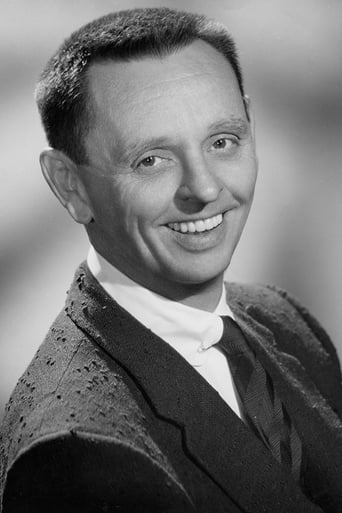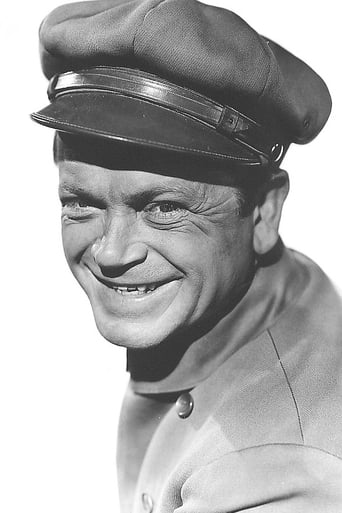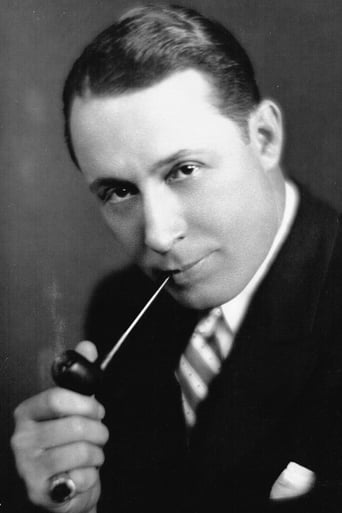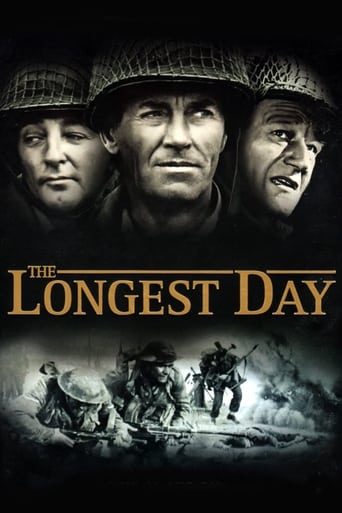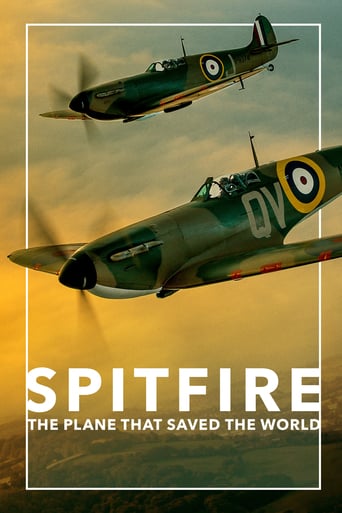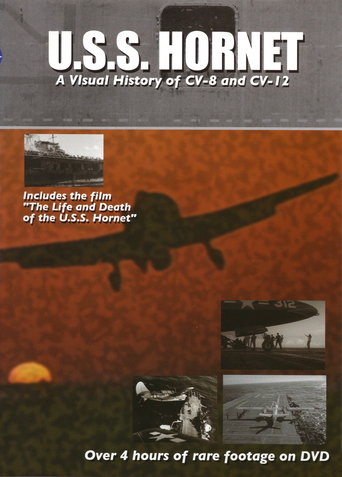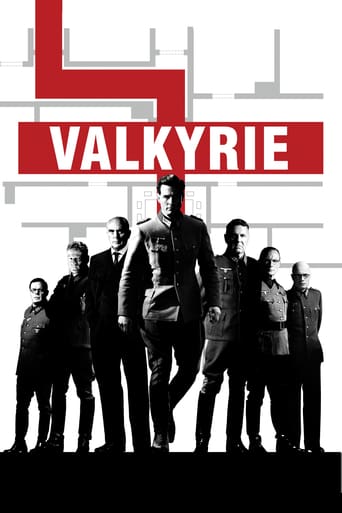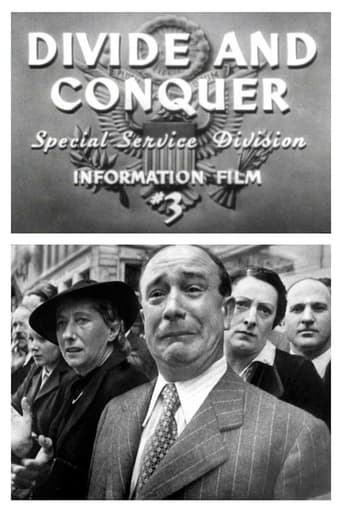
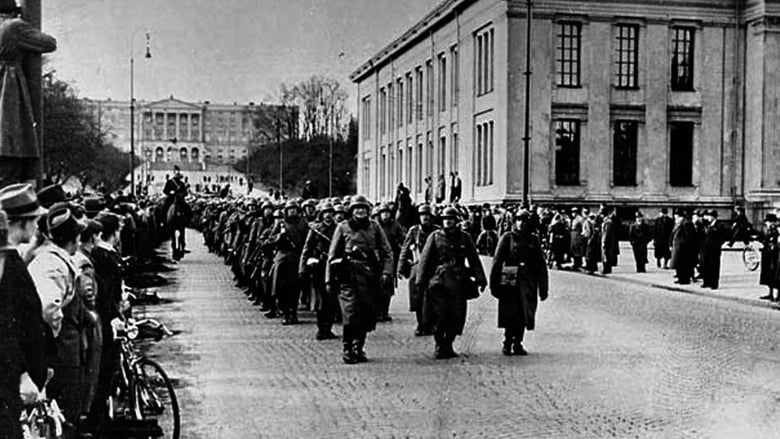
Why We Fight: Divide and Conquer (1943)
The third film of Frank Capra's 'Why We Fight" propaganda film series, dealing with the Nazi conquest of Western Europe in 1940.
Watch Trailer
Cast


Similar titles
Reviews
Throughout the late 1930's, Adolf Hitler continued his conquest of Europe, following up victorious invasions of Austria, Czechoslovakia and Poland with assaults to the West. In 1940, Hitler occupied Denmark on the way to Norway, followed by marches across Holland and Belgium. His air attacks on Rotterdam alone killed thirty thousand people. It was during this time that Hitler's military cunning hit a new low, using refugees as instruments of war. Bombing small towns in the Belgian countryside, citizens attempting to escape the advancing Nazis clogged the only access roads for advancing opposition forces.France, in an attempt to secure it's border with Germany, built the Maginot Line, a series of fortifications and bunkers, but the will of the French people was weak. The Germans used thirty five thousand armored vehicles to advance through the Ardennes Forest, considered almost impossible to traverse, to descend upon France. With the defeat of France, Hitler obtained an armistice with the country under Marshal Petaine, effectively enslaving the French to the Nazi war machine.What I haven't mentioned yet in my reviews of the prior two installments of the series, is the effective use of charts and maps detailing plans of the German offense. As crude as one might expect from nearly seventy years ago, the graphics are still capably done given the technology of the era. A common tactic deployed by Hitler's military consisted in a recurring use of the 'pincer' attack, performed by encircling an enemy target and closing in for the kill.With the fall of continental Europe, Hitler was now ready to go after the next big prize - Great Britain. That is the subject of Chapter Four of the "Why We Fight" Series.
There has been a political documentary, of recent vintage, called Why We Fight, which tries to examine the infamous Military Industrial Complex and its grip on this nation. It is considered both polemical and incisive in making its case against both that complex and the war fiasco we are currently involved in in Iraq. Yet, a far more famous series of films, with the same name, was made during World War Two, by Hollywood director Frank Capra. Although considered documentaries, and having won Oscars in that category, this series of seven films is really and truly mere agitprop, more in the vein of Leni Reifenstal's Triumph Of The Will, scenes of which Capra recycles for his own purposes. That said, that fact does not mean it does not have vital information that subsequent generations of World War Two documentaries (such as the BBC's lauded The World At War) lacked, nor does that mean that its value as a primary source is any the less valuable. They are skillfully made, and after recently purchasing some used DVDs at a discount store, I found myself with the opportunity to select a free DVD with my purchase. I chose Goodtimes DVD's four DVD collection of the series.Rarely has something free been so worth invaluable. While there are no extras on the DVDs, and the sound quality of the prints varies, these films provide insight into the minds of Americans two thirds of a century ago, when racism was overt (as in many of the classic Warner Brothers pro-war cartoons of the era), and there was nothing wrong with blatant distortion of facts. The seven films, produced between 1942 and 1945, are Prelude To War, The Nazis Strike, Divide And Conquer, The Battle Of Britain, The Battle Of Russia, The Battle Of China, and War Comes To America.Overall, the film series is well worth watching, not only for the obvious reasons, but for the subtle things it reveals, such as the use of the plural for terms like X millions when referring to dollars, rather than the modern singular, or the most overused graphic in the whole series- a Japanese sword piercing the center of Manchuria. Yet, it also shows the complexities of trying to apply past standards to current wars. The lesson of World War One (avoid foreign entanglements) was not applicable to World War Two, whose own lesson (act early against dictatorships) has not been applicable in the three major wars America has fought since: Korea, Vietnam, nor Iraq. The fact that much of this series teeters on the uncertainties of the times it was made in only underscores its historic value in today's information-clogged times. It may not help you sort out the truth from the lies and propaganda of today, but at least you'll realize you are not the first to be in such a tenuous position, nor will you be the last.
Divide and Conquer (1943) *** (out of 4) Frank Capra directed this propaganda film about how Germany struck against the French and brought the country down to nothing more than slaves of Hitler. Out of the three "Why We Fight" films from Capra I'd say I enjoyed this one the most. The generic animated sequences showing Hitler's battle plans might not look the greatest but the information they show makes it easy to see why Germany was such a strong force. Walter Huston narrates.All of the Capra WW2 films are worth watching as are the John Ford directed ones.
It's hard to believe that Americans needed any propaganda in the Second World War to encourage them to support the fight against Nazism. However, up until Pearl Harbour, this was the case. Many Americans took an isolationist attitude, believing that events in Europe were none of their business. Some German-Americans and others formed Bund Societies, actively supporting the Nazi cause! Of course, all this changed on 7 December 1941...'Divide and Conquer' is rather pale propaganda, intended to stir up American support for the fight against Hitler. While the cause is admirable, this is weak stuff. We see newsreel footage of Hitler making radio speeches in German, calmly assuring Denmark and Holland that they have nothing to fear from Germany. Then we see footage of German ships and tanks invading those nations.Walter Huston, as the primary narrator, commendably avoids histrionics, but unfortunately reads his lines from a script which requires him to editorialise, telling us how evil and untrustworthy Hitler is. The events ought to speak for themselves. At one point, we are treated to a brief and utterly gratuitous snip of footage depicting bank-robber John Dillinger glowering at the camera, so that Huston can compare Dillinger to Hitler. That's a bad choice: in the 1940s, many Americans considered the late Dillinger a sort of folk hero.The most interesting parts of this film are the clips of German battle footage, apparently captured by Allied forces. We also see footage of 'undesirables' in occupied France being loaded into tumbrels by their Nazi captors and driven hell-knows-where. What makes this footage powerful is the fact that we see the same faces in more than one shot, forcing us to realise that each of these faces is a specific human being with a real history and a past ... though perhaps not much future.There are some extremely crude animation sequences, depicting arrows moving across Europe to indicate the Nazi advance. These animations were made very inexpensively, and look it, but perhaps that's a point in their favour. The Nazis spent a huge amount of money on 'Kolberg', a ridiculous propaganda film which required them to divert forces and materiel from the western and eastern fronts. By spending so very little money on 'Divide and Conquer', perhaps the U.S. government was able to spend a bit more on feeding the troops who had to win the war. Bless you all, band of brothers.'Divide and Conquer' has very little to offer as cinema, and even less to offer as history: if you want to learn about the Second World War, this film is not remotely one of the best places to start. This film has outlived its usefulness ... but only because the Good Guys won that war: a victory which may have happened partially because of the G.I.s depicted in this film. God bless America, but I'm being generous when I rate this dull documentary. Just 4 out of 10, then.


